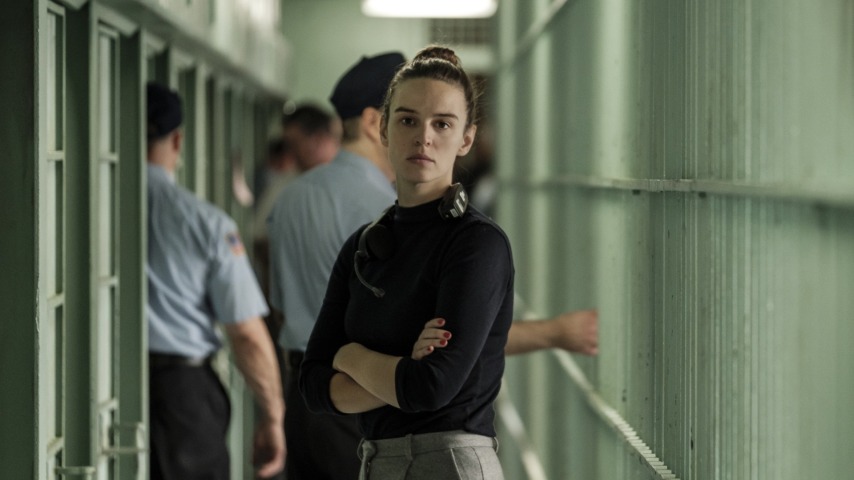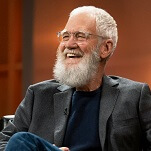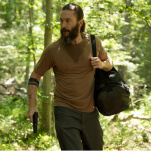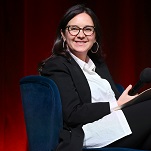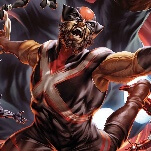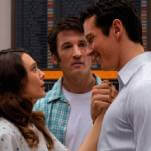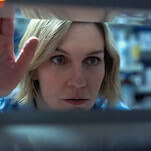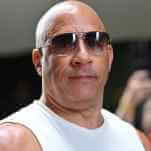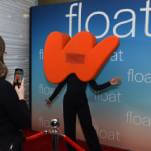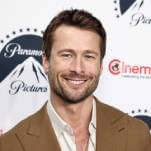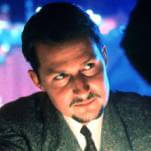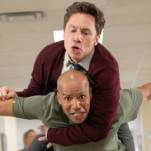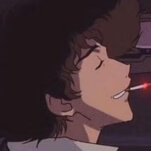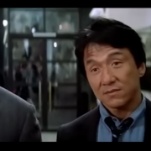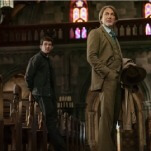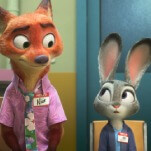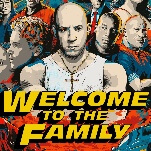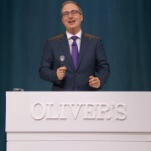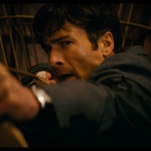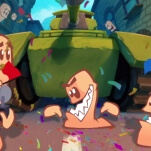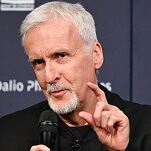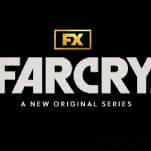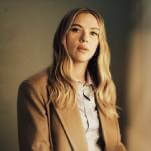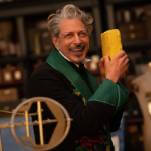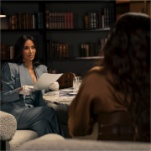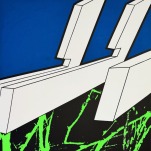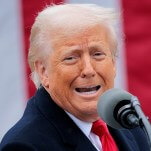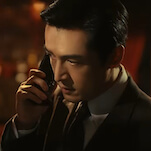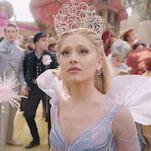Considering its meticulous world-building and visual style, Severance is one hell of a TV show to direct. No one knows that better than Jessica Lee Gagné, the series’ cinematographer since day one. She’s helped creator Dan Erickson and director/producer Ben Stiller bring Severance’s mostly bleak and eerie universe to life. And now she’s forging a new path by helming one of the show’s best—if not the best—episodes yet.
Gagné moves into the director’s chair for “Chikhai Bardo,” an installment that finally tells us what the hell Gemma Scout, a.k.a. Ms. Casey (Dichen Lachman), has been up to. It’s a huge undertaking because episode seven also digs into her relationship with Mark (Adam Scott). Gagné knew her task was to make the audience fall in love with the Scouts just like they have with Mark S. and Helly R. (Britt Lower). The hour is also thrilling, detailing how Lumon has split Gemma into many innies and put her under the care of a nefarious doctor (played by Robby Benson).
It’s safe to say that the pressure was on for the first-time director. The A.V. Club spoke to Gagné about why it was the right time to make this career move, relying on Stiller during the process, and filming that glorious flashback montage in the house she was staying in.
The A.V. Club: What was your reaction after reading episode seven and how did you all decide that this would be your directorial debut?
Jessica Lee Gagné: The first time I read it was in synopsis form, so it wasn’t fully written yet. I read that synopsis on a plane ride from Los Angeles to Montreal. I wasn’t thinking about directing it yet. Anytime it had been brought up or talked about in my life when someone would ask, ‘Do you want to direct?’ I would just say no. But I was going through a very intense personal time and I was studying my subconscious. I was doing a lot of work on myself. Anyway, as I was reading this episode’s synopsis, I had a realization that it felt weirdly linked to me. So when I got off that plane, I told Ben, ‘Okay, I want to do this.’ He had originally told me to direct so it meant a lot to me that he trusted that I could do it. I was able to stop time for a minute and be like, ‘If he trusts I can do it, and if this is all with a crew and actors that I know and people who know me, why am I not letting myself do this?’ I had to look at myself and just say, ‘We’re going to do it.’
AVC: What challenges did you face once you got to the set?
JLG: There were challenges, but a lot of them were from trying to navigate the emotions of the discomfort I was feeling to being as present as possible with the actors, especially the actors who were working on new characters. I had to be there to make sure that the new people would be going in the right direction. I knew I had help with Ben in that sense, which was great because I always knew that if something went off, I had a strong person to bounce back with me. But in terms of the language and that part of directing, it feels like it’s built into me now, having worked on the show [since] season one. So I tried not to question myself too much in that department. It was more the emotional side of it for me and what I was feeling within my body. The biggest challenge was to move through that so I could be with the actors.
AVC: What was the most rewarding scene to shoot?
JLG: The scene of Gemma escaping in the hallways, well, that one went through a lot of changes. It evolved, which makes sense because on Severance we respond to what’s happening in front of us to make the best quality work we can. The sequence of her escaping was always there from the beginning, but it was one in which I wanted to flex a thriller muscle. I had imagined using the set of lights that would turn on when people walked. We had done that in season one as well. Since I knew I wanted that, I told the production designer in advance. We had to plan all the moves. I wanted to film that as a oner initially, but then I realized how tough it would be to deal with the laws of physics. It’s challenging to continuously run after someone in those angular hallways. But we kept it as tight and together as we could, with plenty of rehearsal.
AVC: This episode properly introduces Mark and Gemma Scout as a couple after spending so much time showing Mark S. and Helly R. together. What was it like to collaborate with Adam and Dichen?
JLG: There was a lot of conversation before we shot anything about how we should leave this relationship at the end. They seemed so perfect as a couple in this episode, but for me personally, what I was trying to get out of them was that it wasn’t a perfect relationship. It was a real relationship. That’s what would give weight to the guilt that Mark feels about having lost her in a time when things weren’t fully right between them anymore. There is shame and guilt that comes with that, adding more reason to why he would sever in the first place. How do you fully grieve something if you feel like you weren’t present for that relationship? It’s imperfect on both sides and revealing that impacts the rest of the season.
AVC: A major chunk of this episode is the flashback montage in which Mark and Gemma’s life together is established. Visually, it’s a very sunny and vivid, unlike anything we’ve seen on Severance before. The show’s world is unusually dreary. Can you walk me through what it was like to bring that montage to life?
JLG: A lot of the process with something like this is intuitive. The flashbacks give you nostalgia and let you go into the past. It’s the truest way to transport the viewer, so that was a natural choice. It’s interesting that when you think about Severance and the visuals of the entire show, it’s mostly seen through Mark’s perspective as a person and how he views that particular time or moment in his life. It’s mostly this cold, austere place. So yes, we wanted the flashback montage to be the opposite of that and feel lived-in.
We actually shot all that in the house I was living in during the shoot. It was a really beautiful space in Nyack. I never imagined we would film there, but when I was describing what I wanted for Mark and Gemma’s home to the production designer, I was saying I wanted it to be a Victorian-esque house with books and moldings and such. He said, ‘Do you realize you’re describing your house?’ It just clicked after that. It helped me so much to prep too because I knew where the sunlight would fall and what the space is like. It gave me an advantage to sculpt things as I wanted.
I feel like the concept of time completely explodes in this episode, so I wanted to show seasons passing and time passing. But that whole sequence was very much built on everyone’s participation because we were grabbing things here and there. Ben got some of these Bolex shots of the scenery to help since I had to be a cinematographer and director. I also had someone helping me with the film unit because I got very busy doing multiple things. Sometimes I’d be like, ‘Ben, can you please go shoot something like flowers growing or the sun?’’ I didn’t know if I was going to use it but then it found its way into the montage.
AVC: This montage is so distinctive. I’m curious if you guys talked about any inspirations or other movies you wanted to draw from.
JLG: I didn’t have anything like that for the flashbacks but I had to do a mood board at one point. A couple of movies came to mind for that, including Jane Campion’s Bright Star in terms of the coloring and the lighting, and also a Belgian movie called Close. It’s a great example of what we wanted to evoke with the moving, dancing, light, and color.
AVC: It’s revealed that Gemma is split into multiple innies depending on the rooms she visits. What was it like to film those scenes, particularly the plane crash? It raises a lot of questions about why she’s going through this.
JLG: The idea of the rooms that Gemma goes to comes from Dan Erickson, of course. He wanted it to be places that make you do things you might despise. For example, Gemma only writes Christmas cards in one room. Dan hates doing that, so that’s where the idea came from. Lumon is doing different things to people based on fear or hate. The plane is an obvious one. A lot of people have a fear of flying or going to the dentist. The rooms are about putting people through these processes and [whether] the chip can resist this leaking of feelings. There were a lot more rooms and ideas, but these are the ones that ended up sticking.
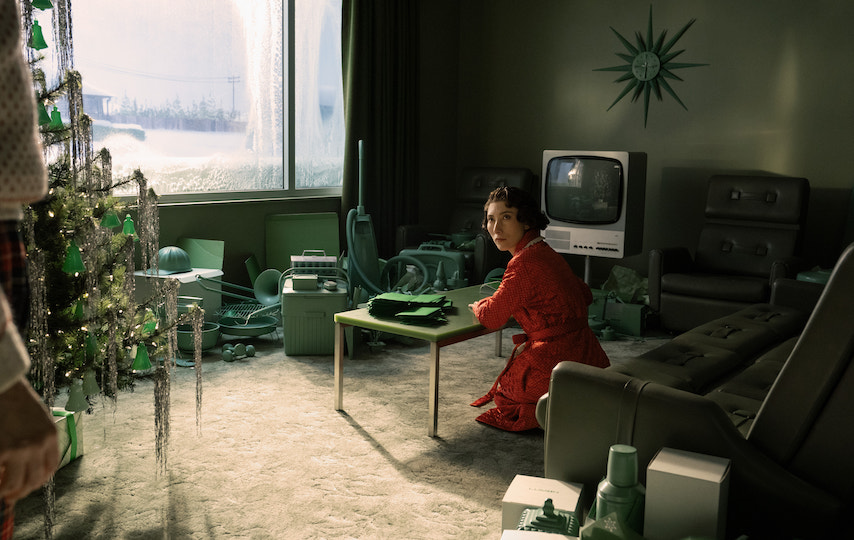
Photo: Apple TV+
AVC: All the scenes between Gemma and Dr. Mauer [Robby Benson] are very prickly and intense. Can you talk about navigating them?
JLG: I think every time it was a bit of a discovery with Dichen and Robby because we had to explore so many different themes with them. The tricky thing with episode seven was what we can reveal. What does Gemma know or not know? There was constant questioning until even the final edit of what we would end up revealing. It was interesting because it made us ask ourselves a lot of questions. I worked separately with Dichen and Robby and then saw what happened on the screen with that. It was my approach with all the actors, including Adam: to focus on each of their perspectives.
The fun thing for Dichen was she got to create different personalities. In the room in which she’s been writing those Christmas cards her entire life, for example, it’s all she knows. So we were like, ‘What can that bring about in you?’ We thought she would have developed that angry-teenager vibe and [be] rebellious. The plane is a different story because it’s a life-endangering moment. She doesn’t know what’s going on and if she’ll survive it. The dentist thing is similar, if not deeper and darker in a way. Robby was also so much fun to work with. We worked together on his character’s obsession with Gemma. I don’t know if I want to say it’s love, but there’s an idolization of her. His arc gets to the point where she rebels because he wants to break her reality and break her. I wanted their scene where she hits him to feel like theater because there’s an element of fakeness and it happens in a small space.
The scenes with Adam and Dichen were less controlled in comparison because their characters are natural with each other. They’re feeding off of each other more lightly at the beginning. But we knew, as I said earlier, that we were going to leave it [by highlighting that] there’s distance between them now. So it was building that into the scenes as well. We shot Adam and Dichen such that they were more together at the beginning and then we started isolating them slowly as we went along. Dichen has been stuck in a more rigid arc, so it was fun for her to explore these beats with Adam. Adam knows Mark and embodies him so well, so listening to his perspective was important. We had fun exploring the Mark of before, not the Mark that we know now.
AVC: What can you share about filming the scenes with Drummond [Ólafur Darri Ólafsson] and Dr. Mauer? They shed light on the other refining team and what Lumon is up to.
JLG: Yes, it was interesting to briefly show the relationship between Drummond and Dr. Mauer because, through them, you’re seeing the inner workings of Lumon that you haven’t before. Dr. Mauer is the Cobel [Patricia Arquette] of this floor and is leading a department. Just like Drummond might’ve checked up on Cobel, he’s checking up on the Doc. This specific set, if you understand it, it’s right underneath the MDR one. They’re supervising the security system, watching what’s going on, trying to see if everyone’s kind of staying aligned and if anything is being triggered with this technology. We always try to keep it quite abstract in the show so there’s space for interpretation, but with this, there are details if you want to look into them.
AVC: This is a splashy way to launch your directing career after being a cinematographer for so many years. What did you learn about the craft and are you excited about pursuing it more?
JLG: The thing I learned the most is that this is what I want to do. It’s hard to say I want to move on from cinematography, but it makes sense. I feel like a part of myself that I buried for many, many years has just shown up. It makes me a happier, lighter person. It’s been a bit of an awakening. So I’m open to directing more episodes of Severance, too, but I don’t know what will happen because nothing’s been decided yet. I’m also looking at where I can go with stories that I might want to tell. It’s a whole new world for me.
This interview has been edited for length and clarity.
